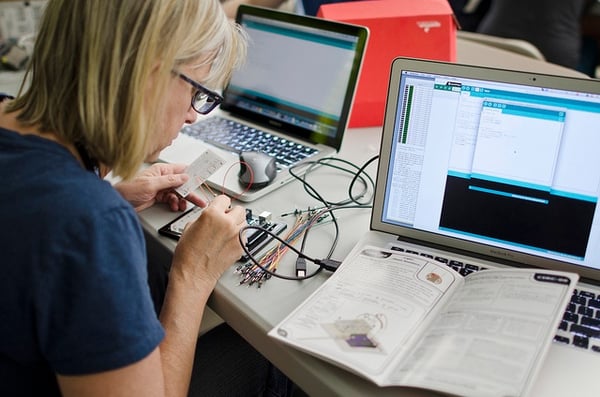It is tempting in a world where new technology appears every day to want to try everything new and shiny. Most of us don’t have the time, energy or brain power to do this, so how do we sort all this out? On a recent professional learning session in the southwest, I hit on the idea that there are three rules with which to sort educational technology out.
- What is it?
- What does it do?
- Why should I care?
As I move through various educational settings training people on emerging technology, I am now striving to be able to deliver answers to these three questions immediately when I enter a learning setting. Let's take a look at these rules one by one, as well as some basic premises that I'm thinking about as I develop this strategy.
What is it?
It is my belief that you should be able to describe any new technology to most adults in two to three sentences, and they should be able to develop essential questions from your description. I recognize that this may not always be true, but in most primary education settings I believe it is a description that is workable.
What does it do?
Following the paradigm “simple is better,” I should be able to describe in a few sentences the function of any new technology so that an educator or someone working in an educational setting can decipher the function of this new technology. Let's look at an example using micro:bit: “The micro:bit is a small computer with inputs and outputs that can be used to teach programming and circuits to younger learners. To start, you can control the onboard LEDs through the buttons and teach the basics of computer science, some simple circuits, and a range of making and creativity with a digital device.”
Why should I care?
As we create and adopt visual devices and services for learning environments, we should be able to remove the tendency to talk in jargon and place these devices in common learning contexts simply and effectively.
Let’s keep working through the micro:bit example: “The micro:bit allows students to explore the relationships between the digital world and the concepts they’re learning in the classroom. For example, a student might explore the concept of variables by lighting successive LEDs based on the value of a variable.”
One size doesn’t fit all

I constantly see people in our community attempting to fit technology in to settings where it doesn't belong. This includes pushing technology in settings where it's too simple and doesn't challenge and engage the learner, as well as pushing technology at levels of difficulty mismatched to the population being served. My constant struggle is to develop content, techniques and tools that are difficult enough to challenge the learners, but not too difficult -- the zone of proximal development.
Your turn
It's my expectation that not everyone will agree with some of the statements I've made. Please add any expectations or rules that you have adopted in your setting in the comments, I'm very curious as to how you see this take on adopting technology.



helpful information